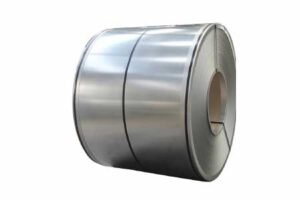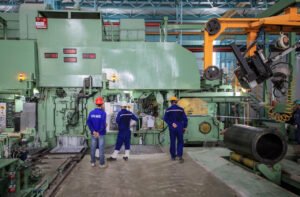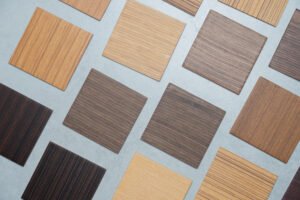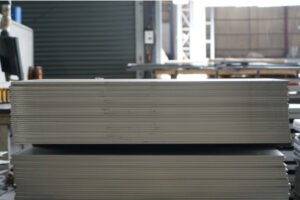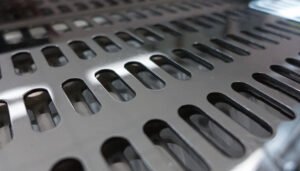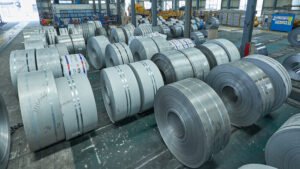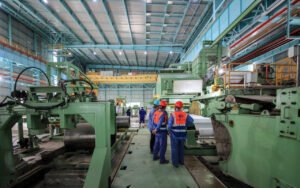Декоративный лист из нержавеющей стали для панелей лифтов: Зеркальные, травленые и PVD цвета

Вам надоело видеть унылые, не вдохновляющие интерьеры лифтов, которые отвлекают от общего дизайна здания? Эти небольшие помещения часто производят первое и последнее впечатление, но в них часто используются материалы, которые легко царапаются, устаревают и тускнеют. Пришло время найти решение, сочетающее в себе захватывающую дух эстетику и прочную долговечность.
Декоративные листы из нержавеющей стали предлагают премиальное решение для панелей лифтов, сочетая такие материалы, как нержавеющая сталь марки 304 или 316, с такими видами отделки, как зеркальная полировка, сложное травление и яркое PVD-окрашивание. Такое сочетание позволяет создавать поверхности, которые не только потрясают воображение, но и отличаются исключительной прочностью и износостойкостью.
Будучи директором по глобальному бизнесу компании MFY, я не понаслышке знаю, как правильный выбор материала может превратить чисто функциональное пространство в запоминающуюся часть архитектурного образа. Выход за рамки стандартной отделки - это уже не роскошь, а необходимость для создания пространств, которые выделяются на фоне других. Сложность заключается в том, чтобы выбрать материал, способный выдержать суровые условия ежедневного использования и в то же время создать мощный дизайнерский образ - баланс, который декоративная нержавеющая сталь соблюдает идеально.
Именно здесь настоящие инновации в материаловедении встречаются с архитектурным видением. Эволюция от простых, утилитарных лифтов к индивидуальным вертикальным транспортным средствам отражает более широкую тенденцию в коммерческом и жилом дизайне. Это признание того, что каждый квадратный фут здания вносит свой вклад в его индивидуальность и впечатления его обитателей. В моей работе с клиентами на глобальных рынках - от шумных производственных центров до роскошных строительных проектов - разговор изменился. Мы больше не просто говорим о перемещении людей, мы говорим о повышении уровня их впечатлений. Это требует более глубокого изучения материалов, которые делают это возможным, взвешивая не только первоначальную визуальную привлекательность, но и весь жизненный цикл, от установки и обслуживания до долгосрочной устойчивости и вечного стиля.
Какие эстетические проблемы возникают при проектировании панелей лифтов?
При проектировании интерьера лифта возникает уникальная дилемма: как создать "вау"-фактор в компактном помещении с высокой проходимостью? Архитекторы и дизайнеры постоянно сталкиваются с ограничениями по материалам, бюджетными ограничениями и противоречивыми требованиями долговечности и элегантности. Поиск единого материала, который бы решал все эти задачи, является основной проблемой.
Основные эстетические задачи при проектировании лифтовых панелей включают в себя баланс между чрезвычайной долговечностью и высококлассным внешним видом, обеспечение соответствия дизайна общей архитектурной тематике здания, управление стоимостью жизненного цикла и соблюдение строгих норм безопасности без ущерба для создания уникального и приятного пользовательского опыта.
На протяжении своей карьеры в MFY я консультировал множество проектов, в которых команда дизайнеров оказывалась между молотом и наковальней. Им мог нравиться вид шпона натурального дерева, но они боялись его уязвимости к царапинам и влаге в оживленном коммерческом здании. Или они могли бы рассмотреть смелый цвет краски, но беспокоились бы о том, что потертости и сколы испортят внешний вид в течение нескольких месяцев. Этот постоянный компромисс часто приводит к безопасному, не вдохновляющему выбору, который не производит впечатления. Переход на более прочный и универсальный материал - это не просто обновление, это стратегическое решение, которое разрешает эти фундаментальные противоречия. Мы помогаем нашим клиентам рассматривать лифт не как второстепенный элемент, а как неотъемлемый, динамичный элемент их дизайнерского повествования. Понимая недостатки традиционных материалов, мы можем лучше оценить инновационные решения, которые предлагает декоративная нержавеющая сталь, превращая сложную проблему дизайна в возможность отличия и долгосрочной ценности.
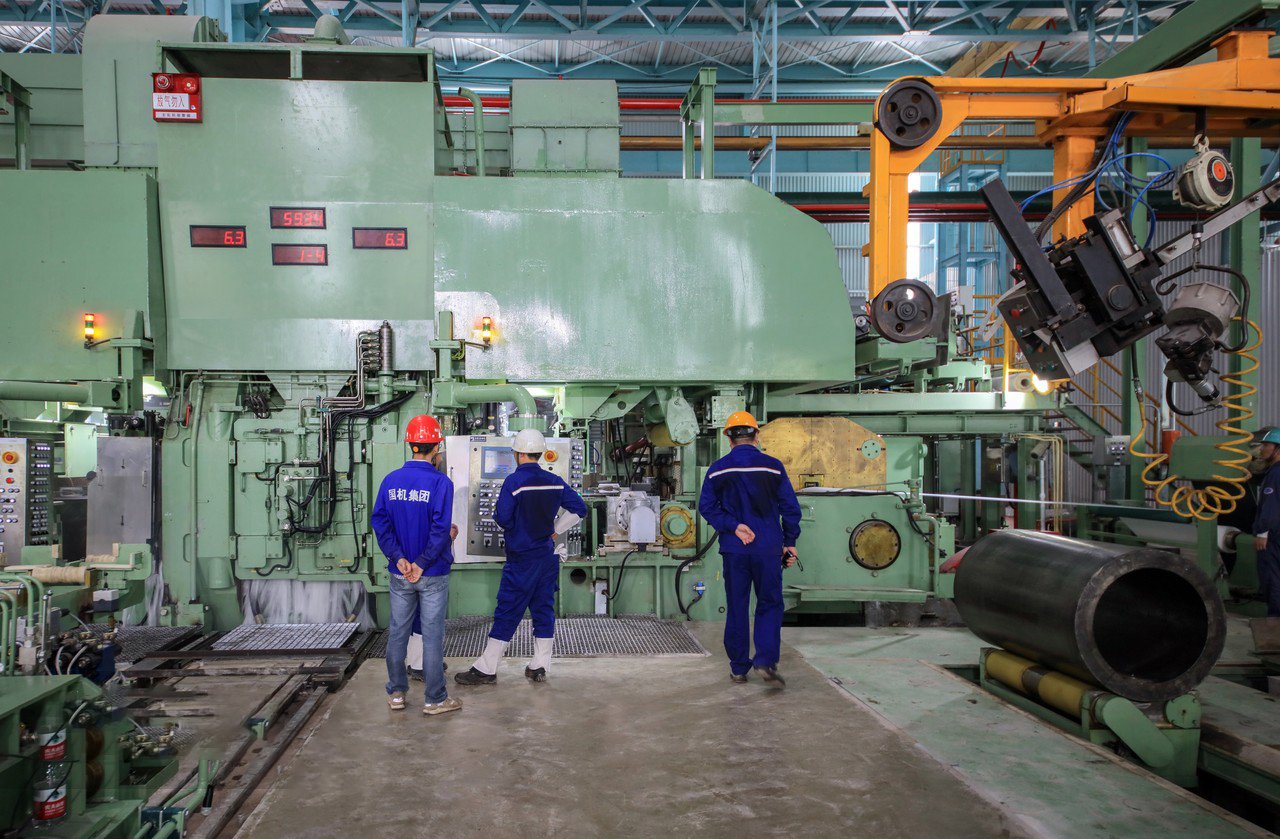
Борьба за сочетание долговечности с высококлассным дизайном
В мире архитектуры и дизайна интерьеров не так много областей, к которым предъявляются столь высокие требования, как к интерьерам лифтов. Эти помещения должны функционировать как выносливые рабочие лошадки и одновременно создавать образ изысканности и качества. Эта двойственность является источником головной боли для дизайнеров. Традиционные роскошные материалы часто не выдерживают высокой нагрузки. Например, красивая деревянная панель может быть легко помята багажом в отеле или поцарапана оборудованием в офисном здании. Стоимость ремонта или замены таких деликатных поверхностей быстро возрастает, превращая красивый дизайн в обязанность по обслуживанию.
Я вспоминаю консультацию с разработчиком нового роскошного отеля в Дубае. Они хотели создать роскошные условия для гостей с момента прибытия, и лифты были ключевой частью этого видения. Первоначальный проект предусматривал использование импортных итальянских мраморных панелей. Несмотря на потрясающий вид, нам пришлось откровенно обсудить практические аспекты. Постоянный поток гостей, багажных тележек и тележек для уборки неизбежно привел бы к образованию сколов и пятен. Затраты и неудобства, связанные с частым обслуживанием, были бы значительными. Это классический пример конфликта между долговечностью и дизайном. Задача состоит не только в том, чтобы хорошо выглядеть в первый день, но и в том, чтобы сохранить этот первозданный вид на долгие годы.
Именно здесь разговор переходит на передовые материалы. Задача подталкивает нас к поиску поверхностей, которые предлагают лучшее из двух миров. Материал должен обладать визуальной глубиной, текстурой и привлекательностью роскошной отделки, но при этом обладать прочностью, присущей промышленным изделиям. Именно поэтому в нашей работе MFY так много внимания уделяется таким видам отделки, как PVD и травление на основе нержавеющей стали. Мы предоставляем холст, который уже обладает прочностью, а затем применяем художественное оформление, создавая продукт, который решает эту основную проблему отрасли без компромиссов.
Достижение единства бренда и архитектуры
Лифт - это не изолированная капсула, а жизненно важное, движущееся продолжение архитектуры здания и его фирменного стиля. Путешествие из вестибюля на нужный этаж должно быть органичным и подчеркивать дизайнерские идеи всего здания. Основная эстетическая задача заключается в том, чтобы дизайн интерьера лифта не противоречил и не отвлекал от тщательно продуманной атмосферы здания. Если вестибюль минималистичен и современен, с бронзовыми акцентами, стандартный лифт из матовой нержавеющей стали может показаться слишком индустриальным и заурядным.
Эта проблема возрастает в таких масштабных проектах, как корпоративные штаб-квартиры или брендированные сети отелей, где последовательность является ключевым фактором. Я работал с транснациональной технологической компанией над ее новым кампусом в Юго-Восточной Азии. Их руководство по бренду было невероятно конкретным, вплоть до точного оттенка глубокого синего цвета и матовой металлической текстуры, использованной в дизайне продукции. Они хотели, чтобы их лифты соответствовали этому высокотехнологичному и премиальному бренду. Использование готовых материалов было недопустимо. Это нарушило бы атмосферу погружения в бренд, на создание которой они потратили миллионы.
Решение требовало глубокой индивидуализации. Совместно с командой дизайнеров мы разработали индивидуальное PVD-покрытие синего цвета на листе нержавеющей стали с волосяной шлифовкой. В результате интерьер лифта стал естественным продолжением их бренда - элегантным, современным и уникальным. Такого уровня единства трудно достичь с помощью традиционных материалов, таких как пластиковый ламинат или краска, которые предлагают ограниченную палитру и не могут повторить изысканную текстуру готового металла. Декоративная нержавеющая сталь позволяет гибко сочетать цвета бренда, включать логотипы с помощью травления и создавать по-настоящему индивидуальную обстановку.
Перемещение по бюджетным ограничениям и соблюдение нормативных требований
Хотя эстетическое видение имеет первостепенное значение, оно всегда должно существовать в практических рамках бюджета и правил безопасности. Это последняя и зачастую самая сложная задача для дизайнеров. Самый красивый и прочный материал в мире будет бесполезен, если он нецелесообразен с финансовой точки зрения или не соответствует нормам безопасности. Дизайнеры должны найти тонкий баланс, подбирая материалы, которые будут экономически эффективны на протяжении всего жизненного цикла, а не только в момент покупки.
Традиционные материалы могут быть обманчивы в этом отношении. Пластиковая ламинатная панель может иметь более низкую первоначальную стоимость, но если ее необходимо заменять каждые пять-семь лет из-за расслоения или повреждения, то общая стоимость владения резко возрастает. Напротив, декоративная нержавеющая сталь, несмотря на более высокие первоначальные инвестиции, имеет гораздо больший срок службы при минимальном обслуживании, что делает ее более экономичной в долгосрочной перспективе. Я часто провожу клиентов через этот анализ, демонстрируя, как долговечность нержавеющей стали приводит к прямой, долгосрочной экономии.
Кроме того, все материалы для лифтов должны строго соответствовать стандартам пожарной безопасности, таким как Испытание ASTM E841 по распространению пламени и плотности дыма, а также по нормам доступности и прочности. Нержавеющая сталь по своей природе является негорючей, что дает ей значительное преимущество. Сложность заключается в том, чтобы гарантировать, что любые декоративные покрытия, такие как PVD-покрытия или ламинаты, наносимые на сталь, также соответствуют этим строгим стандартам. В компании MFY интегрированная цепочка поставок и строгий контроль качества гарантируют, что все наши декоративные изделия не только красивы и долговечны, но и полностью соответствуют международным нормам безопасности, снимая это бремя с дизайнера и клиента.
| Характеристика | Стандартная нержавеющая сталь | Деревянный шпон | Пластиковый ламинат | MFY Декоративная нержавеющая сталь (PVD/травление) |
|---|---|---|---|---|
| Первоначальная стоимость | Умеренный | Высокий | Низкий | Высокий |
| Долговечность | Высокий | Низкий | Низкий-умеренный | Очень высокий |
| Техническое обслуживание | Низкий | Высокий | Умеренный | Очень низкий |
| Жизненный цикл (годы) | 30+ | 5-10 | 7-12 | 30+ |
| Эстетические варианты | Ограниченный | Умеренный | Умеренный | Очень высокий |
| Стоимость жизненного цикла | Низкий | Очень высокий | Умеренный | Низкий-умеренный |
Нержавеющая сталь устойчива к износуПравда
Декоративные листы из нержавеющей стали, например, марки 304/316, обеспечивают исключительную стойкость к царапинам и ежедневному использованию, сохраняя при этом эстетичный вид.
Деревянные панели лучше всего подходят для лифтовЛожь
Деревянный шпон подвержен вмятинам и воздействию влаги в лифтах с высокой проходимостью, что делает его непрактичным, несмотря на роскошный внешний вид.
Как зеркальная, травленая и PVD-отделка улучшает внешний вид лифтовых панелей из нержавеющей стали?
Лифтовые панели выглядят безвкусно и индустриально, не производя впечатления на посетителей и не соответствуя вашему дизайнерскому замыслу. Этот стандартный вид удешевляет впечатления пользователей, заставляя вашу собственность чувствовать себя обыденной. Вам нужен способ превратить эти поверхности в образцы роскоши, искусства и современности.
Зеркальная отделка создает иллюзию простора и света, придавая классический, роскошный вид. Травленые узоры создают сложные текстуры и графику, разработанные на заказ. Цвета бронзы с PVD-покрытием выходят далеко за рамки стандартного серебра.
Эти три техники отделки - инструменты, которые мы используем в MFY, чтобы превратить простой лист нержавеющей стали в индивидуальный архитектурный элемент. Это не просто поверхностные покрытия; это преобразующие процессы, которые в корне меняют взаимодействие стали со светом, текстурой и цветом. Истинная сила заключается в их сочетании. Представьте себе бронзовую зеркальную панель с PVD-покрытием и тонким, выгравированным на заказ геометрическим узором. Это уже не просто стена лифта, это произведение функционального искусства. Такой подход позволяет нам удовлетворить любые дизайнерские предпочтения - от ультрасовременных и минималистичных до витиеватых и классических. Используя эти отделочные материалы, мы даем возможность архитекторам и дизайнерам освободиться от ограничений, налагаемых традиционными материалами, и создавать лифты, которые одновременно являются визуально ошеломляющими и долговечными, отражая истинное качество пространства.
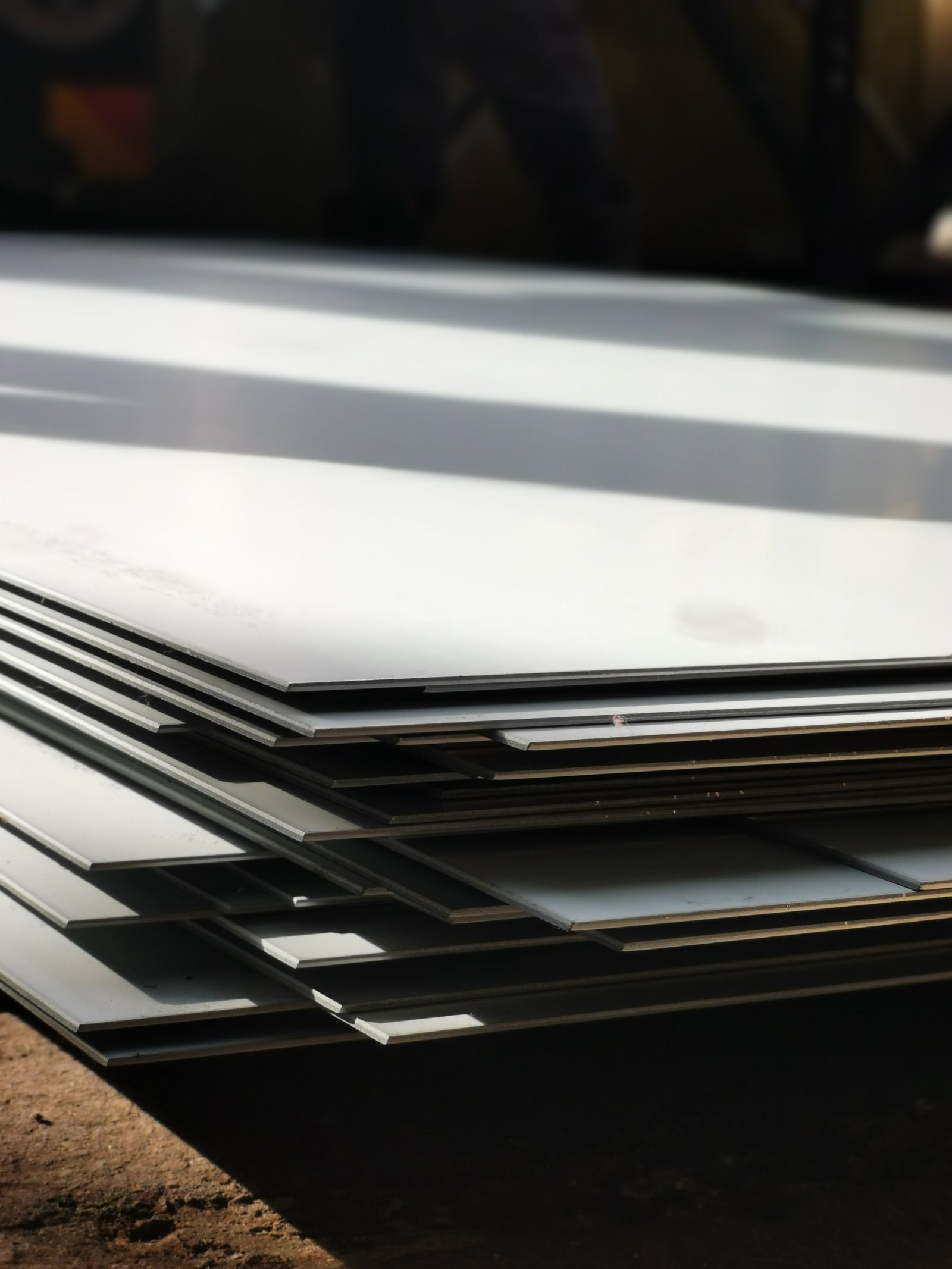
Отражающая привлекательность и психология зеркальной отделки
Использование зеркальная отделка панелей лифтов из нержавеющей стали2 это один из самых мощных инструментов архитектора для манипулирования восприятием пространства. Лифты по своей природе являются маленькими, замкнутыми пространствами. Суперзеркальное покрытие, например #8 или выше, создает почти идеальное отражение, фактически стирая визуальные границы кабины. Благодаря этому пространство кажется более просторным, открытым и менее клаустрофобным, что значительно повышает комфорт пассажиров. Полированная поверхность улавливает и отражает рассеянный свет, делая интерьер более ярким и привлекательным без необходимости установки дополнительных светильников.
Помимо пространственного восприятия, зеркальная отделка вызывает стойкие психологические ассоциации с роскошью, чистотой и современностью. Вспомните сверкающие вестибюли пятизвездочных отелей, интерьеры дорогих магазинов или первозданную обстановку корпоративных штаб-квартир. Полированные поверхности - неотъемлемая часть этих премиальных пространств. Когда мы работали с клиентом, создающим элитный торговый комплекс в Сингапуре, они выбрали для лифтов зеркально отполированные панели из нержавеющей стали. Это решение было стратегическим: отражения не только сделали лифт более просторным, но и отразили яркие витрины окружающих магазинов, создав динамичный и захватывающий опыт покупок еще до того, как покупатель достиг этажа назначения.
Качество зеркальной отделки имеет первостепенное значение. Настоящая суперзеркальная отделка достигается благодаря тщательному, многоступенчатому процессу механической полировки, который сглаживает стальную поверхность до невероятной степени гладкости. Этот процесс, который мы усовершенствовали в компании MFY в результате многолетних исследований и разработок, обеспечивает отражение без искажений, имитирующее стеклянное зеркало, но с превосходной прочностью и ударопрочностью нержавеющей стали. Это элегантное решение, сочетающее в себе изысканную эстетику и практическую потребность в прочном и безопасном материале в общественных местах.
Художественная глубина и индивидуальность травленых узоров
Травление превращает панель из нержавеющей стали из простой поверхности в холст для художественного выражения. В этом процессе используется контролируемый метод, обычно кислотное или лазерное травление, для выборочного удаления тонкого слоя поверхности стали, создавая рисунок с контрастной текстурой и отделкой. В результате может получиться любой рисунок - от тонкого, повторяющегося геометрического узора до сложной крупномасштабной фрески. Эта возможность обеспечивает беспрецедентный уровень индивидуализации, позволяя дизайнерам наполнить интерьер лифта уникальным характером и повествованием.
Возможности применения практически безграничны. Если речь идет о культурном учреждении или музее, мы можем нанести на панели исторические узоры или абстрактное искусство, превратив саму поездку на лифте в часть экспозиции. Я вспоминаю проект новой национальной библиотеки, где команда дизайнеров хотела включить в архитектуру отрывки из известных литературных текстов. Мы помогли им реализовать эту идею, точно вытравив на панелях из матовой нержавеющей стали рисунок, похожий на сценарий. Взаимодействие между гладкой, не травленой сталью и текстурированной, матовой поверхностью надписей создало тонкий тактильный эффект, который был одновременно визуально привлекательным и глубоко связанным с назначением здания.
Кроме того, травление можно сочетать с другими видами отделки для достижения еще большего эффекта. Травленый узор на зеркально отполированной панели создает динамичное взаимодействие отражения и текстуры. Если нанести травление на лист с PVD-покрытием, вытравленные участки обнажают серебристый цвет нержавеющей стали, создавая поразительный двухцветный эффект. Такое сочетание отделок предоставляет дизайнерам невероятно богатую палитру для работы, позволяя им выбрать поверхность, которая действительно уникальна для их проекта и выходит далеко за рамки типовых вариантов, предлагаемых традиционными материалами.
Вибрация и превосходная долговечность PVD-покрытия
Покрытие методом физического осаждения паров (PVD) - это технология, позволяющая изменить цвет нержавеющей стали. В отличие от покраски или гальваники, которые наносятся на поверхность и подвержены сколам, отслаиванию и выцветанию, PVD - это процесс молекулярного скрепления. Он происходит в высоковакуумной камере, где твердый металл, такой как титан или цирконий, испаряется. Затем этот пар осаждается на лист нержавеющей стали, образуя тонкую, похожую на керамику пленку, невероятно твердую и химически связанную с основой. В результате получается яркий, насыщенный цвет, который является неотъемлемой частью самой стали.
Основным преимуществом PVD является его исключительная долговечность. Покрытие обладает высокой устойчивостью к истиранию, царапинам и коррозии, что делает его идеальным для интерьеров лифтов с высокой проходимостью. Оно также обладает превосходной устойчивостью к ультрафиолетовому излучению, благодаря чему такие цвета, как золото, бронза, розовое золото и черный, не потускнеют со временем даже под воздействием солнечного света. Я часто рассказываю историю о клиенте, управляющем оживленным транзитным узлом на Ближнем Востоке. Они заменили свои окрашенные двери лифта на наши черные листы нержавеющей стали с PVD-покрытием. Спустя годы, несмотря на тысячи ежедневных пользователей, двери практически не имеют признаков износа, что свидетельствует о стойкости покрытия.
С точки зрения дизайна PVD открывает совершенно новый мир возможностей. Оно позволяет нержавеющей стали освободиться от ограничений, наложенных на нее серебристым цветом, и вписаться в любую цветовую гамму. Отделка золотом шампанского может создать теплую, гостеприимную атмосферу в гостиничном доме, а графитово-черная отделка - элегантный, ультрасовременный образ для корпоративного офиса. В компании MFY наши передовые линии PVD позволяют точно подбирать цвета и согласовывать крупные заказы, гарантируя идентичность каждой панели в проекте с несколькими лифтами. Такое сочетание эстетической универсальности и прочности промышленного класса делает нержавеющую сталь с PVD-покрытием инновационным и превосходным решением.
Зеркальная отделка создает иллюзию простораПравда
Высококачественная зеркальная отделка отражает свет и окружающую обстановку, благодаря чему интерьеры небольших лифтов кажутся более просторными и открытыми.
Покрытия PVD похожи на краскуЛожь
PVD - это процесс молекулярного скрепления, который создает пленку, похожую на керамику, в отличие от поверхностного нанесения краски.
Какие проблемы лежат в основе традиционных материалов для панелей лифтов?
Вы рассматриваете традиционные материалы, такие как дерево, краска или пластиковый ламинат, для своего проекта лифта. Однако вы не замечаете их недостатков, которые могут привести к быстрому износу, устаревшему внешнему виду и увеличению бюджета на обслуживание, которое станет постоянной головной болью при эксплуатации.
Традиционные материалы для панелей лифтов, такие как деревянный шпон, пластиковый ламинат и окрашенный металл, отличаются низкой прочностью. Они сильно подвержены царапинам, вмятинам, повреждению от влаги и расслоению, что приводит к частым дорогостоящим ремонтам и ухудшению эстетики в течение короткого срока службы.
Эта тема постоянно звучит в моих разговорах с руководителями объектов и подрядчиками, которые устали от постоянного цикла ремонта и замены. Клиент из крупной российской фирмы, занимающейся коммерческой недвижимостью, как-то сказал мне: "Мы установили красивые ламинатные панели в одной из наших новых офисных башен, но уже через шесть месяцев углы отслоились, а поверхность покрылась потертостями от ежедневного движения. Из-за этого наше новое здание стало выглядеть изношенным". Этот опыт не уникален. Он подчеркивает фундаментальное несоответствие между материалом и областью применения. Переход к более надежному решению, такому как декоративная нержавеющая сталь3 Это не просто достижение лучшего внешнего вида, это разумное и долгосрочное вложение средств, которое защищает стоимость здания и его имидж.
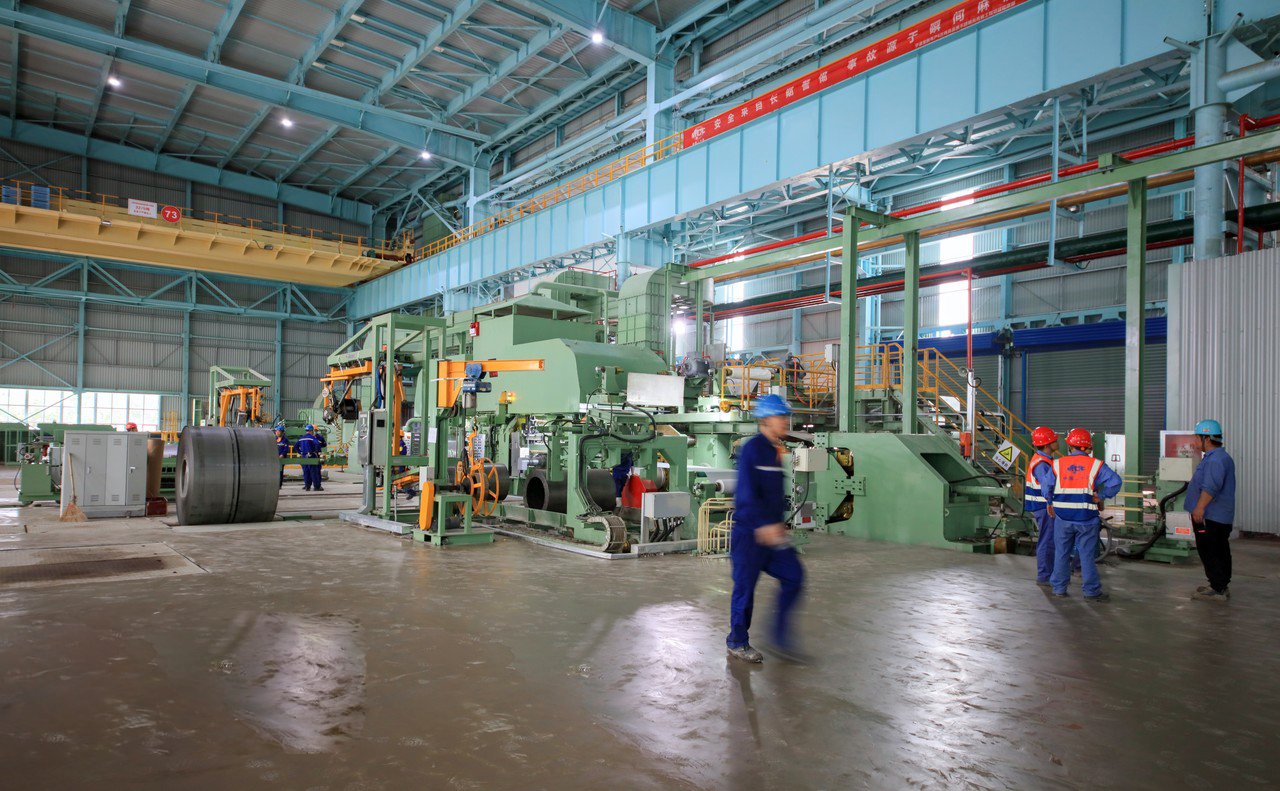
Дефицит долговечности: Износ, разрыв и вандализм
Основной недостаток традиционных материалов для панелей лифтов - их неспособность противостоять жестким условиям эксплуатации. Лифты - это не нежные помещения; они подвергаются постоянному шквалу ударов, потертостей и потенциальных актов вандализма. Пластиковые ламинаты4Несмотря на низкую первоначальную стоимость, они отличаются хрупкостью. Края и углы подвержены сколам и отслаиванию, особенно при ударах тележек, колясок или багажа. При нарушении поверхностного слоя целостность всей панели нарушается, что приводит к неприглядному внешнему виду, который трудно восстановить без особых усилий.
Древесный шпон, несмотря на естественную и теплую эстетику, еще более хрупок. Они мягкие, и их легко поцарапать, вмять или выколоть. В коммерческих помещениях одно неосторожное движение оборудования может привести к необратимым повреждениям. Кроме того, дерево подвержено воздействию влаги, что может привести к его деформации, разбуханию или появлению пятен - значительный риск в помещениях с частой уборкой или во влажном климате, что является общей проблемой для наших клиентов в Юго-Восточной Азии. Окрашенные металлические поверхности не лучше, так как на них легко появляются потертости и царапины, обнажая грунтовку или необработанный металл, что требует частых подкрашиваний, которые никогда не соответствуют оригинальной заводской отделке.
Этот "дефицит долговечности" - не только эстетическая проблема, но и финансовая. Постоянная необходимость ремонта и последующей замены создает цикл расходов, который владельцы зданий часто недооценивают. В отличие от этого, основной материал наших декоративных панелей -Нержавеющая сталь марки 304 или 3165-исключительно твердые и устойчивые к ударам. Современные технологии отделки, такие как PVD, добавляют еще один слой надежной защиты. Эта врожденная прочность означает, что наши панели могут выдерживать ежедневные нагрузки в условиях высокой проходимости, сохраняя свой первоначальный вид в течение многих лет, а не месяцев.
Кошмар технического обслуживания и растущие затраты на жизненный цикл
Помимо уязвимости к повреждениям, традиционные материалы создают значительные трудности в обслуживании. Чистка и уход за ними гораздо сложнее и требуют больше времени, чем в случае с нержавеющей сталью. Деревянные панели требуют специальных полиролей и чистящих средств, чтобы не повредить отделку, а также могут впитывать масла и пятна, что затрудняет эффективную санитарную обработку - основная проблема для гостиничных и медицинских учреждений. Пластиковые ламинаты могут окрашиваться чернилами или агрессивными химикатами, а их текстурированные поверхности могут задерживать грязь, требуя интенсивной чистки, которая со временем еще больше разрушает материал.
Это приводит к обсуждению общей стоимости владения (TCO) - концепции, на которой я всегда акцентирую внимание своих клиентов. Низкая первоначальная стоимость может быть невероятно обманчивой, если материал требует дорогостоящего и частого обслуживания и имеет короткий срок службы. Мы проанализировали стоимость жизненного цикла типичного коммерческого лифта в течение 20 лет. Хотя ламинатные панели были самыми дешевыми в установке, они требовали замены как минимум дважды за этот период, а также значительных трудозатрат на текущий ремонт. Деревянный шпон оказался еще дороже из-за высокой первоначальной стоимости и необходимости специального обслуживания.
Декоративная нержавеющая сталь, несмотря на более высокие первоначальные инвестиции, оказалась наиболее экономичным решением в долгосрочной перспективе. Уход за ней прост: обычно достаточно протереть ее салфеткой из микрофибры и мягким, pH-нейтральным чистящим средством. Она не требует специализированных химических средств и не нуждается в замене из-за износа. Такое резкое сокращение трудозатрат на обслуживание и замену приводит к значительному снижению совокупной стоимости владения, что является четким финансовым аргументом, который находит отклик у опытных владельцев зданий и управляющих объектами.
| Фактор стоимости | Пластиковый ламинат | Деревянный шпон | MFY Декоративная нержавеющая сталь |
|---|---|---|---|
| Первоначальные материальные затраты (на один лифт) | $2,000 | $5,000 | $7,000 |
| Ежегодное техническое обслуживание Трудозатраты/материалы | $300 | $500 | $100 |
| Требуется замена в течение 20 лет | 2 | 1-2 | 0 |
| Стоимость замены (включая трудозатраты) | $6,000 | $12,000 | $0 |
| Общая стоимость владения за 20 лет | $14,000 | $27,000 | $9,000 |
Критические ограничения в дизайне и современной эстетике
Традиционные материалы все чаще не соответствуют ожиданиям современного дизайна. В современной архитектуре предпочтение отдается чистым линиям, аутентичным материалам и утонченной минималистской эстетике. Пластиковые ламинаты, особенно с рисунком под дерево или камень, часто выглядят искусственными и устаревшими, не передавая ощущение качества и постоянства, к которому стремятся дизайнеры. Варианты их оформления, хотя и разнообразны, часто не имеют той текстурной глубины и взаимодействия со светом, которые дает настоящий, обработанный металл.
Окрашенные поверхности, несмотря на широкую цветовую гамму, дают плоскую, одномерную отделку. Им не хватает динамики, присущей матовым, зеркальным панелям или панелям из нержавеющей стали с PVD-покрытием, которые меняют свой вид в зависимости от угла освещения и перспективы зрителя. Тенденция в дизайне роскоши - отказ от имитации в сторону аутентичности. Клиенту не нужно что-то, что выглядит как бронзы; им нужен материал с истинными визуальными свойствами бронзы, но с повышенной прочностью. Нержавеющая сталь с PVD-покрытием обеспечивает именно это - подлинный цвет и блеск таких металлов, как золото, бронза или медь, в сочетании с превосходными эксплуатационными характеристиками стали.
Именно здесь и проявляется инновационное видение MFY. Мы рассматриваем нержавеющую сталь не только как структурный компонент, но и как средство дизайна. Расширяя границы возможного в отделке, мы предоставляем архитекторам инструменты, необходимые для того, чтобы не отставать от тенденций в дизайне. Мы позволяем им создавать пространства, которые кажутся современными, вневременными и, что самое главное, аутентичными. Это стремление к эстетическому совершенству, подкрепленное промышленной прочностью, - вот что в корне отличает декоративную нержавеющую сталь от ее традиционных и все более устаревающих аналогов.
Нержавеющая сталь имеет более низкую совокупную стоимость владенияПравда
Из таблицы видно, что 20-летняя стоимость нержавеющей стали составляет $9 000 против $14 000-$27 000 для традиционных материалов благодаря нулевой замене и минимальному обслуживанию.
Древесина хорошо противостоит влажностиЛожь
В тексте особо упоминается, что деревянный шпон деформируется и окрашивается во влажном климате, что делает его проблематичным в Юго-Восточной Азии.
Какие инновационные решения предлагают эти декоративные отделки?
Вы ищете решение для лифтовых панелей, которое одновременно поражает воображение и практически не поддается разрушению. Это похоже на невозможный выбор между художественностью и функциональностью, заставляющий вас идти на компромисс с одним, чтобы достичь другого. Такой компромисс в конечном итоге ослабляет дизайн и долгосрочную ценность здания.
Декоративная отделка из нержавеющей стали предлагает инновационные решения, органично сочетая чрезвычайную долговечность с практически безграничной эстетической свободой. Они позволяют создавать индивидуальные проекты, поверхности с защитой от отпечатков пальцев и динамическую интеграцию света, напрямую решая основные проблемы современного дизайна лифтов, обеспечивая при этом долговечность и минимальное обслуживание.
Эта синергия формы и функции лежит в основе философии MFY. Мы не считаем себя просто поставщиком стали; мы - партнер по разработке решений для архитектурного сообщества. Давайте выйдем за рамки основных принципов и рассмотрим действительно инновационные возможности применения этих отделок. Мы говорим о большем, чем просто красивая поверхность. Мы говорим о создании интерактивных, интеллектуальных и устойчивых сред, которые значительно улучшают впечатления пользователей, решают реальные эксплуатационные проблемы владельцев зданий и устанавливают новый стандарт того, каким может быть интерьер лифта. Именно здесь материаловедение6 становится формой искусства.
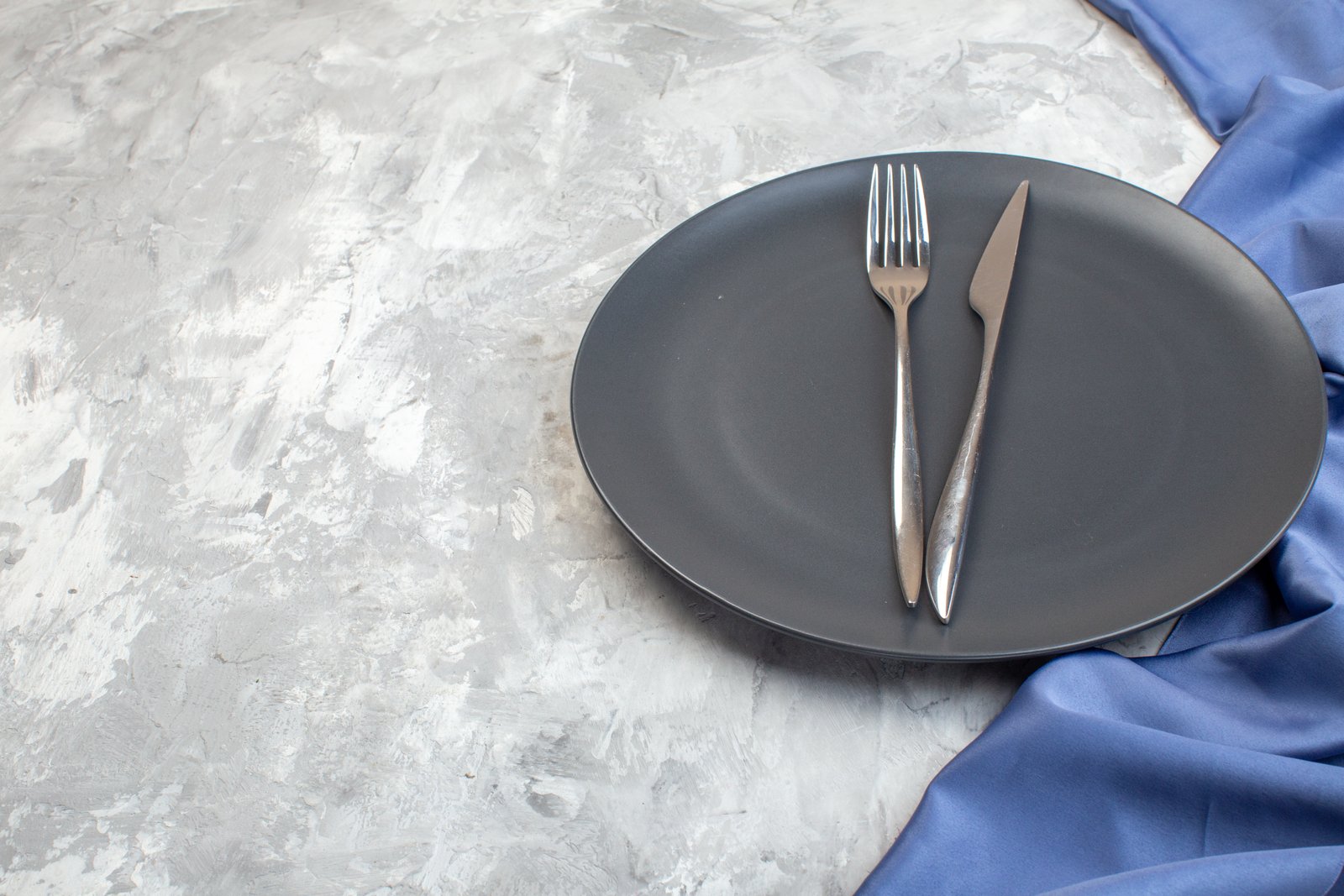
Интеграция света и отражения для создания динамичной атмосферы
Одна из самых интересных инноваций - это взаимодействие декоративной нержавеющей стали и современных технологий освещения. Интерьеры лифтов можно превратить из статичных коробок в динамичные, чутко реагирующие среды. Панели с зеркальной отделкой, особенно бронзового или золотистого оттенка с PVD-покрытием цвета шампанского, можно сочетать со скрытым непрямым светодиодным освещением. Свет льется на полированные поверхности, создавая теплое, изысканное сияние, которое усиливает ощущение роскоши и комфорта. Отражающая способность стали многократно усиливает эффект освещения, создавая светлое, уютное пространство с минимальным потреблением энергии.
С травлеными панелями потенциал становится еще глубже. При подсветке травленого листа из нержавеющей стали сам рисунок становится светящимся. Представьте себе лифт, в котором выгравированный лазером рисунок лесного навеса подсвечивается сзади, создавая потрясающий эффект силуэта, который обеспечивает как рассеянный свет, так и мощный визуальный эффект. Я работал над проектом элитной жилой башни, где мы реализовали именно такую концепцию. Панели с подсветкой превратили поездку на лифте в безмятежный, похожий на искусство опыт, став фирменной особенностью здания, которую жильцы с гордостью демонстрировали своим гостям.
Эта интеграция выходит за рамки простой эстетики: она повышает безопасность и удобство использования. Хорошо освещенные интерьеры улучшают видимость и создают ощущение безопасности для пассажиров. Освещение можно даже сделать "отзывчивым", меняя цвет или интенсивность в зависимости от времени суток или этажа, к которому подъезжает лифт. Такое слияние материала и света позволяет дизайнерам создать мультисенсорное путешествие, делая краткие мгновения, проведенные в лифте, более приятными, увлекательными и запоминающимися.
Практические инновации в области поверхностей для защиты от отпечатков пальцев
При всей своей красоте полированные и темные поверхности исторически имеют один существенный недостаток: отпечатки пальцев. В местах с высокой проходимостью поддержание чистоты и отсутствие пятен может стать постоянной борьбой для уборщиков. Именно здесь на помощь приходит одна из самых практичных инноваций в области декоративной нержавеющей стали: защита от отпечатков пальцев Технология AFP7. AFP - это прозрачное покрытие, часто с наноструктурой, которое наносится поверх отделки из нержавеющей стали. Оно создает гидрофобную и олеофобную поверхность, которая противостоит налипанию масел и влаги с кончиков пальцев.
Влияние этой технологии огромно, особенно в гостиничном, коммерческом и медицинском секторах, где чистота и внешний вид имеют первостепенное значение. Подумайте о черном зеркальном PVD-покрытии в лифте в холле отеля. Без AFP это был бы кошмар по обслуживанию. С высококачественным покрытием AFP количество пятен резко сокращается, а те, что появляются, можно легко стереть сухой салфеткой из микрофибры. Это значительно сокращает время на уборку и использование химических чистящих средств, что приводит к значительной экономии средств и более рациональному техническому обслуживанию.
Компания MFY вложила значительные средства в научно-исследовательские работы, чтобы усовершенствовать наши покрытия AFP, обеспечив их не только эффективность, но и достаточную прочность, чтобы выдерживать коммерческие циклы очистки без разрушения. Когда мы предоставили травленые панели с покрытием AFP для нового больничного крыла, менеджер учреждения был в восторге. Панели сохранили свой чистый, профессиональный вид при минимальных усилиях, способствуя поддержанию гигиенической среды и снижая нагрузку на персонал. Это прекрасный пример инновации, которая решает реальную, ощутимую проблему для конечного пользователя.
Кастомизация в масштабе: Вплетение фирменного стиля в архитектуру
Самое инновационное решение, предлагаемое декоративной нержавеющей сталью, - это возможность масштабной персонализации. Эта технология позволяет компаниям вплетать свой фирменный стиль непосредственно в ткань зданий, делая его одновременно постоянным и изысканным. Благодаря точности современного травления и однородности цвета PVD, можно с идеальной точностью воспроизвести сложные логотипы, специфические фирменные узоры или уникальные художественные мотивы на десятках или даже сотнях панелей лифтов.
Такая возможность обеспечивается благодаря полностью интегрированной цепочке поставок, как у MFY. Мы можем взять у клиента концепцию дизайна, обработать необработанную рулонную нержавеющую сталь, нанести цветное PVD-покрытие, выполнить точное травление и нарезать панели по точным спецификациям, необходимым для проекта. Я вспоминаю сотрудничество с глобальной сетью отелей, в которой происходило масштабное обновление бренда. Они хотели, чтобы фирменный геометрический узор стал повторяющимся мотивом во всех их новых и отремонтированных объектах по всему миру. Мы работали с ними над тем, чтобы воплотить этот узор в травленом рисунке на заказном розовом золоте с PVD-покрытием.
Поскольку мы контролируем весь производственный процесс, нам удалось обеспечить абсолютную согласованность - от флагманского отеля в Нью-Йорке до нового курорта на Бали. Это означает, что их бренд был идентично выражен на всех континентах, укрепляя их идентичность и создавая целостное восприятие гостей. Такой уровень масштабируемой персонализации просто невозможен при использовании традиционных материалов, таких как дерево или камень. Он позволяет вывести здание за рамки типовой отделки и создать индивидуальные архитектурные элементы, которые рассказывают историю и формируют мощный образ бренда.
Нержавеющая сталь интегрирует освещениеПравда
Декоративные панели из нержавеющей стали можно комбинировать со светодиодным освещением для создания динамичных, энергоэффективных эффектов окружающей среды за счет отражения и подсветки.
Для нанесения покрытий AFP требуются химические веществаЛожь
Покрытия против отпечатков пальцев фактически снижают потребность в химических чистящих средствах, поскольку пятна можно стереть просто сухой салфеткой из микрофибры.
Каковы стратегии ухода за декоративными панелями из нержавеющей стали?
Вы вложили деньги в потрясающие декоративные панели из нержавеющей стали для своих лифтов. Теперь вы справедливо беспокоитесь о защите этих инвестиций и о том, чтобы они и дальше выглядели безупречно. Страх перед царапинами, пятнами или использованием неправильного чистящего средства может вызвать ненужное беспокойство.
Для ухода за декоративными панелями из нержавеющей стали регулярно используйте мягкую ткань из микрофибры с pH-нейтральным чистящим средством или мягким мылом и водой. Всегда аккуратно протирайте поверхность в направлении текстуры. Важно избегать любых абразивных порошков, химических веществ на основе отбеливателя и стальной ваты.
Неизменная красота высококачественной декоративной нержавеющей стали сочетается с простотой ухода за ней. В отличие от темпераментных материалов, требующих постоянного специализированного внимания, нержавеющая сталь по своей природе устойчива к внешним воздействиям. Благодаря обширному опыту компании MFY, обслуживающей клиентов от влажного климата Индии до шумных городских центров России, мы свели техническое обслуживание к нескольким основным передовым методам. Эти простые стратегии призваны эффективно защитить ваши инвестиции, гарантируя, что поверхности сохранят свой блеск на десятилетия. Речь идет не о том, чтобы добавить еще одну сложную задачу к управлению объектом; речь идет о применении правильных и простых методов для сохранения престижа и целостности архитектурного дизайна.
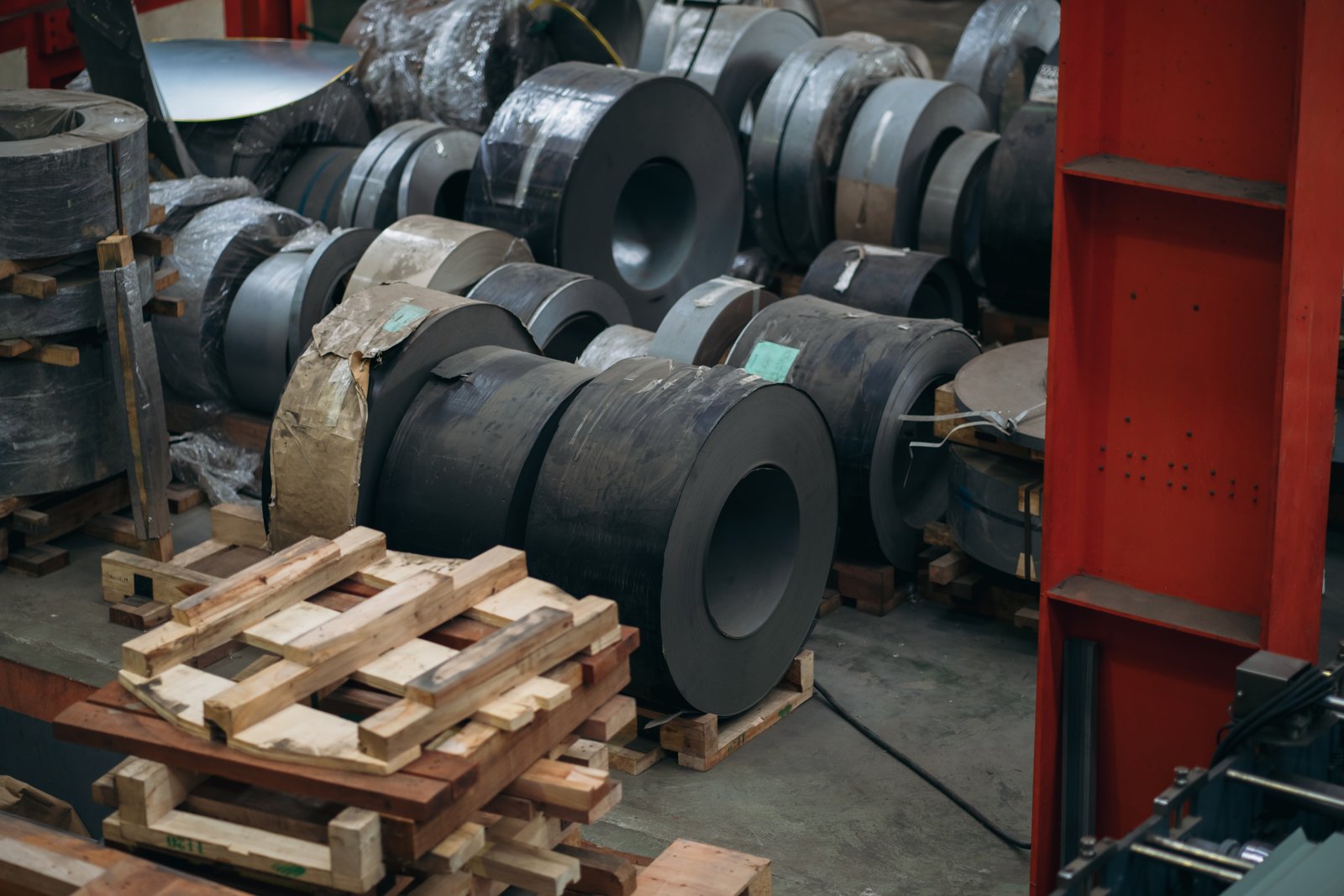
Протоколы регулярной очистки различных отделочных материалов
Эффективный долгосрочный уход начинается с последовательного и правильного протокола регулярной очистки. Главное - использовать правильные инструменты и чистящие средства для конкретного вида отделки. Для всех типов декоративной нержавеющей стали самым важным инструментом является мягкая неабразивная салфетка из микрофибры, которая эффективно очищает поверхность, не оставляя ворса и не вызывая микроцарапин. Также важно всегда протирать в направлении зернистости стали или линий полировки. Протирание против зерна может со временем испортить покрытие.
Для панелей с зеркальной отделкой необходимо добиться блеска без разводов. Лучше всего использовать стандартный подход, очиститель для стекол без аммиака8. Слегка распылите очиститель на салфетку из микрофибры, а не непосредственно на панель, чтобы предотвратить образование капель и обеспечить равномерное нанесение. Для поверхностей с PVD-покрытием (как полированных, так и матовых) идеально подходит простой раствор мягкого посудного мыла и теплой воды. Такой щадящий подход эффективно удаляет ежедневные загрязнения, не повреждая прочный слой PVD. После очистки важно промыть поверхность чистой влажной тканью, а затем полностью высушить ее другой сухой тканью из микрофибры, чтобы предотвратить появление водяных пятен.
Травленые поверхности требуют несколько иной техники, чтобы обеспечить тщательную очистку текстурированных участков. Хотя салфетка из микрофибры по-прежнему является основным инструментом, для удаления стойких загрязнений, застрявших в вытравленных бороздках, можно использовать мягкую нейлоновую щетку. Аккуратно проведите щеткой в направлении узора, используя тот же мягкий раствор мыла и воды. Ни в коем случае нельзя использовать абразивные чистящие губки, зернистые чистящие средства или средства на основе хлорного отбеливателя для любого типа декоративной нержавеющей стали, так как они могут нанести необратимый ущерб отделке.
Устранение царапин, пятен и мелких повреждений
Хотя высококачественная нержавеющая сталь исключительно долговечна, в местах с высокой проходимостью все же могут возникнуть небольшие косметические повреждения. Стратегия устранения этих повреждений в значительной степени зависит от вида отделки. На поверхностях с покрытием против отпечатков пальцев (AFP) пятна и отпечатки пальцев легко устраняются. В большинстве случаев достаточно протереть их сухой салфеткой из микрофибры, чтобы мгновенно вернуть первозданный вид. Это одно из самых значительных преимуществ технологии AFP в обслуживании.
Устранение царапин - более сложная задача. Для стандартной матовой или волосяной отделки очень легкие поверхностные царапины иногда можно загладить с помощью специализированных неабразивных средств. Полировочные составы для нержавеющей стали9. Заниматься этим должен только квалифицированный персонал, поскольку неправильная техника может ухудшить внешний вид. Однако зеркально отполированные, PVD-покрытые и травленые поверхности, как правило, невозможно отполировать от царапин, не повредив окружающую отделку. Для таких элитных покрытий наиболее эффективной стратегией является профилактика. Она включает в себя использование защитных пленок в процессе установки и обучение персонала и арендаторов осторожному обращению с острыми предметами, тележками и багажом.
Для наших клиентов MFY делает акцент на проактивном подходе. Во время передачи проекта мы предоставляем подробные инструкции по обслуживанию и часто обучаем персонал клининговой службы правильным методам. Такая передача знаний имеет решающее значение для долгосрочного сохранения объектов. Простое руководство по устранению неисправностей может стать бесценным инструментом для команды технического обслуживания.
| Выпуск | Тип отделки | Рекомендуемое действие | Избегайте любой ценой |
|---|---|---|---|
| Отпечатки пальцев/грязь | Зеркало, PVD, AFP | Протирайте сухой или влажной тканью из микрофибры. Используйте средство для чистки зеркал. | Жесткие химикаты, бумажные полотенца (могут быть абразивными). |
| Пыль/легкая грязь | Все виды отделки | Протирайте мягкой тканью с мягким мылом/водой. Протирайте в направлении зерна. | Абразивные порошки или чистящие подушечки. |
| Упрямая грязь | Травленая отделка | Используйте мягкую нейлоновую щетку с мягким мылом/водой для протравливания канавок. | Металлические щетки, инструменты для зачистки. |
| Легкие царапины | Только матовая отделка | Протестируйте специализированную неабразивную полироль на незаметном участке. | Попытки полировки зеркального или PVD-покрытия. |
| Водные пятна | Все виды отделки | Промойте чистой водой и сразу же высушите салфеткой из микрофибры. | Дайте чистящим растворам высохнуть на поверхности. |
Долгосрочное хранение и управление жизненным циклом
Фундамент долгосрочной сохранности закладывается задолго до того, как к панели прикоснется первая чистящая салфетка. Он начинается с выбора правильного материала от надежного поставщика. Выбор более высокой марки стали, например 316, для прибрежных районов или агрессивных сред, а также обеспечение достаточной толщины и качества PVD-покрытия являются наиболее важными решениями. Как поставщик с глобально интегрированной цепочкой, мы в MFY гордимся качеством нашего сырья и надежностью наших процессов отделки. Это исходное качество - лучшая гарантия долгого и беспроблемного срока службы.
Управление жизненным циклом также включает в себя создание культуры заботы в здании. Это включает в себя такие простые меры, как обеспечение использования служебных лифтов для перемещения тяжелого оборудования и мебели, а также размещение в лифтах гостиниц тонких напоминаний о необходимости обработки багажа. Обучение обслуживающего персонала - это не разовая акция, оно должно быть частью регулярного обучения, особенно когда на работу принимаются новые сотрудники. Обеспечение их необходимыми инструментами - чистыми салфетками из микрофибры, мягкими щетками и одобренными pH-нейтральными чистящими средствами - это небольшое вложение, которое приносит огромные дивиденды в плане сохранности.
В конечном счете, долгосрочная стратегия основана на свойствах, присущих самому материалу. Декоративная нержавеющая сталь не гниет, не шелушится, не расслаивается и не выцветает, как ее традиционные собратья. Ее "обслуживание" заключается скорее в регулярной чистке, чем в постоянном ремонте. Выбрав высококачественный продукт и внедрив эти простые и последовательные протоколы очистки, владелец здания может гарантировать, что его лифтовые панели будут выглядеть так же потрясающе на двадцатую годовщину, как и в первый день. Такая беспрецедентная долговечность и низкая совокупная стоимость владения - это самое выгодное предложение.
[text-placehold].
Салфетки из микрофибры предотвращают появление царапинПравда
Мягкие салфетки из микрофибры не абразивны и эффективно очищают поверхности из нержавеющей стали, не оставляя на них микроцарапин.
Отбеливатель безопасен для нержавеющей сталиЛожь
Химические вещества на основе отбеливателя никогда не следует использовать для декоративной нержавеющей стали, так как они могут привести к необратимому повреждению покрытия.
Заключение
В конечном счете, декоративные листы из нержавеющей стали с зеркальной, травленой и PVD-краской являются превосходным выбором для современных лифтов. Они преодолевают проблемы эстетики и долговечности, характерные для традиционных материалов, предлагая универсальное, долговечное и экономически эффективное решение для любого архитектурного замысла.
-
Понимание требований пожарной безопасности для материалов панелей лифтов ↩
-
Узнайте об эстетических и пространственных преимуществах зеркальных покрытий ↩
-
Узнайте о долговечности, экономии средств и эстетических преимуществах панелей из нержавеющей стали. ↩
-
Поймите, какие недостатки присущи пластиковым ламинатам и как они влияют на долговечность. ↩
-
Узнайте, почему нержавеющая сталь 304 и 316 выдерживает удары и воздействие окружающей среды. ↩
-
Откройте для себя слияние технологий и дизайна в области применения нержавеющей стали. ↩
-
Поймите, как AFP уменьшает количество отпечатков пальцев и сокращает время обслуживания. ↩
-
Узнайте, как очистители стекол без аммиака предотвращают появление разводов на зеркальных поверхностях. ↩
-
Найдите инструкции по безопасному использованию полировочных составов для устранения мелких царапин. ↩
У вас есть вопросы или нужна дополнительная информация?
Свяжитесь с нами, чтобы получить индивидуальную помощь и квалифицированный совет.
